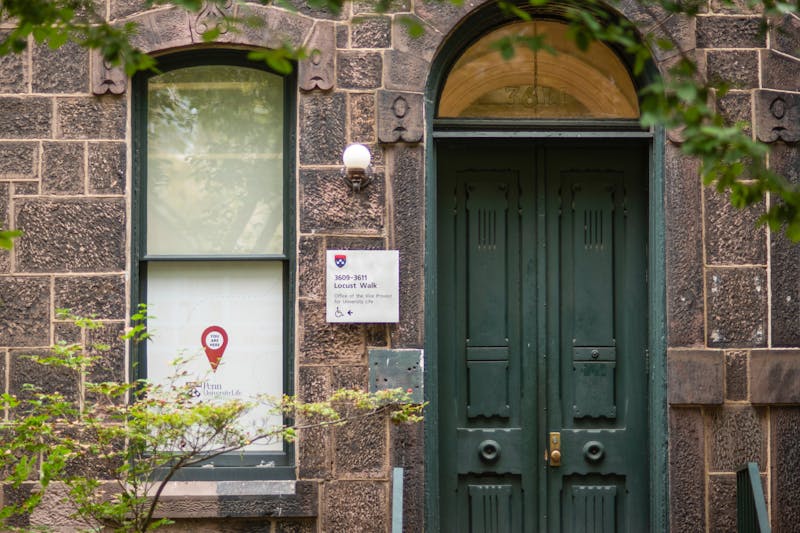
Desks in the architecture studios in Charles Addams Hall are covered with extra clothes, food and even alarm clocks. The studios have become second homes, as well as places of artistic creation, for many architecture majors.
From its founding in 1890, the Penn architecture program has been a thriving, continually expanding major. It offers students the opportunity to "embrace technology as well as craft, ... to make things as well as imagine them," according to department literature.
Approximately 25 students from each class decide to major in architecture every year, joining a tightly knit community of atypical Penn students who walk around with goggles on their faces and sheets of Plexiglass or two-by-fours in their hands.
"You can see us carrying random things around campus," College junior Michelle Gaster says, "sometimes walking out with our goggles still on."
Richard Wesley, the undergraduate chairman of the Department of Architecture, explains that architecture is a unique field of study because students "live in architecture, are born in it and die in it."
The architecture major is one of the most rigorous courses of study at Penn -- with some studio classes scheduled six hours a week. Unlike in most majors, students cannot enroll in architecture classes -- other than a writing seminar about architecture -- until their sophomore year.
"Students should take general courses freshman year," Wesley says. By sophomore year, "students who [are] attracted to the major see it as a vocation," not just a course of study.
Students who declare an architecture major come from all sorts of educational backgrounds. Gaster was originally an Engineering student, but realized after a project based on building design that architecture was the major for her.
Kelly Mangold, also a junior in the program, began as an economics major and found her way to architecture in the hopes of pursuing a more creative field of study.
Gaster and Mangold are part of a group of students in "Design Fundamentals 1" who just completed one of their first construction projects. These students had to choose one of their habits and design a space dedicated to it. Afterwards, they scouted out Philadelphia locations for their habit space.
"The space can be on top of an existing building, could be on open land. ... It's a very personalized project," Gaster says.
Design junior Kaelsie Saravia has also been hard at work on her habit project, which is centered around a bed.
"My project is called 'The Bed is Everything.' The bed is surrounded by a bookshelf, a table for food [and] a trapdoor for shoes. I really never have to get up," Saravia says.
Mangold has taken a different approach to the project, building a unique space where she can enjoy her daily midnight meals.
"I eat my final meal before I go to bed instead of eating breakfast, so I wanted to build a space that shows the unconventionality of having a midnight meal," Mangold says.
All of these students are taking part in the architecture major, Wesley says, because they are hoping to experience self-expression through building materials, as well as providing something to society.
These goals can be fulfilled once sophomore year rolls around and a three-year track of studio-based courses begins.
The first year of study is based on the foundation principles of representation and fabrication.
In the second year of study, students embark on the path of construction in classes centered on design fundamentals.
Finally, by senior year, students are able to expand beyond traditional architecture and take classes in landscape architecture. They also work on senior projects that have a social or ecological purpose.
Seniors who want to continue their education in architecture may also apply to the Intensive Major in Architecture.
Those accepted into this program complete their senior year of undergraduate education concurrently with their first year of graduate school by taking three additional course units. The program allows them to complete their degree in two instead of the typical three years.
While the course load is intense and many nights are spent at the drafting table, Wesley says students feel truly accomplished upon completing this program and go on to make definite changes in the world.
The Daily Pennsylvanian is an independent, student-run newspaper. Please consider making a donation to support the coverage that shapes the University. Your generosity ensures a future of strong journalism at Penn.
DonatePlease note All comments are eligible for publication in The Daily Pennsylvanian.







